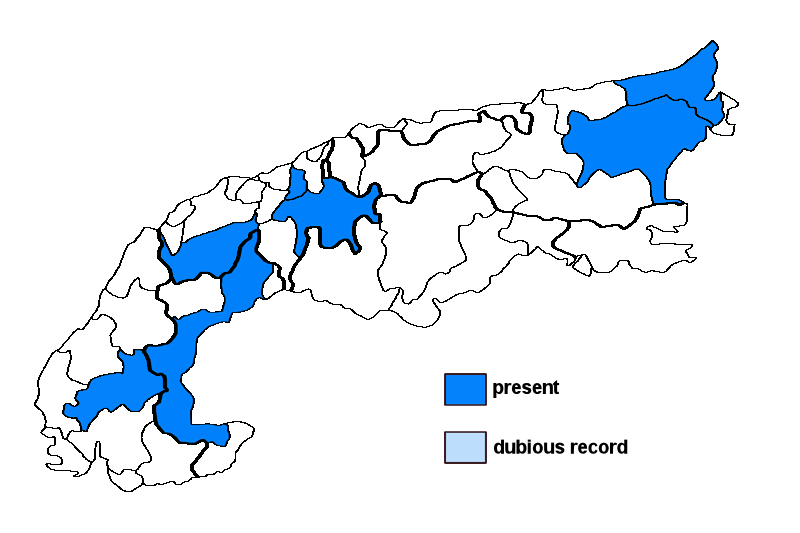Mycomicrothelia macularis (Hampe ex A. Massal.) Keissl.
Syn.: Didymosphaeria analeptoides (Bagl. & Carestia) Rehm, Melanotheca macularis (Hampe ex A. Massal.) Th. Fr., Microthelia analeptoides Bagl. & Carestia, Microthelia macularis Hampe ex A. Massal., Tomasellia macularis (Hampe ex A. Massal.) Blomb. & Forssell, Verrucaria analeptoides (Bagl. & Carestia) Hue
Non- or doubtfully lichenised.
Substrate: bark
Altitudinal range: from the montane belt (potential vegetation: deciduous forests dominated by Fagus sylvatica and closed coniferous forests with Picea abies) to the subalpine belt (potential vegetation: open, taiga-like forests dominated by Larix decidua and/or Pinus cembra and Rhododendron)
Note: an apparently non-lichenised species with subepidermal ascomata (less than 0.2 mm in diam.) arising singly or crowded, with only the ostiolar region exposed and a well developed basal fringe, a dimidiate dark brown involucrellum consisting of host cells and intermingled hyphae, the ascomatal wall brown, of densely interwoven hyphae, paler at the base, rather sparse anastomosing and persistent interascal filaments, 8-spored fissitunicate asci, 1-septate, brown ascospores (12-15 × 5-7 µm) with the upper cell somewhat wider and with a thin, verruculose perispore, and pycnidia containing bacillary conidia; on corticated twigs of small shrubs (Daphne, Ribes), not rare in the mountains of Central Europe, including the Alps, but rarely recorded.
Austria: Steiermark; Niederösterreich (incl. Wien); Switzerland: Glarus; Graubünden; Valais; France: Haute-Alpes; Italy: Piemonte;





